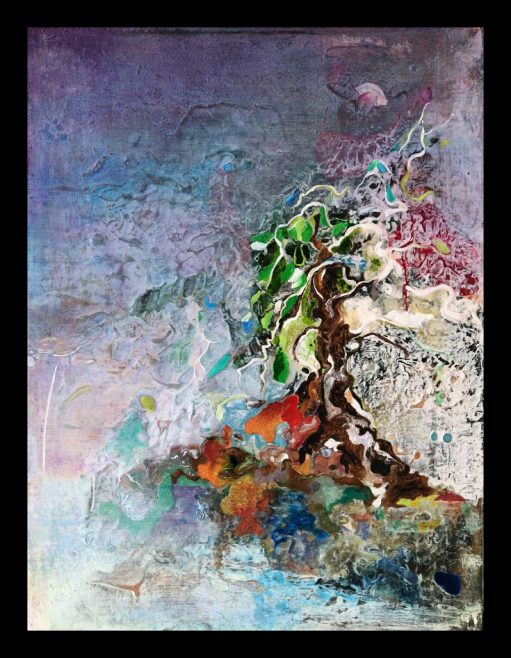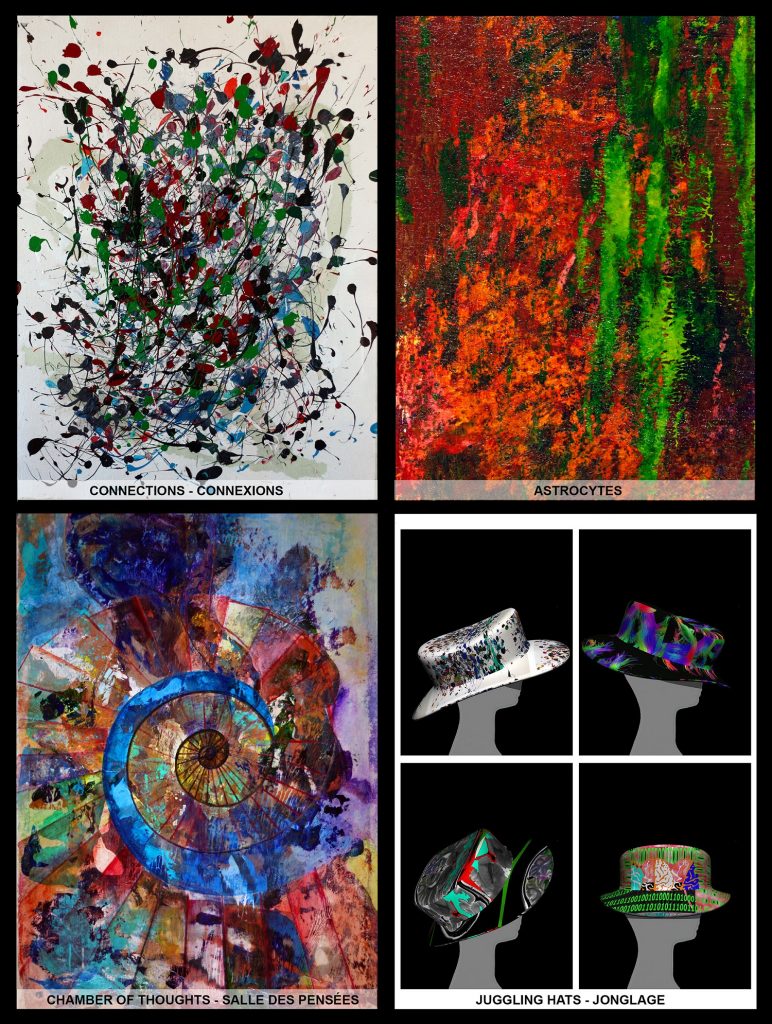“…When I started, it was really hard because people were working in their silos, but with the CCNA I felt like there was an opportunity to combine the different silos and make a different music out of it…”
Early Inspiration
At a young age, Amanpreet Badhwar was inspired to work in the medical field by her maternal grandfather. A well-respected physician in India, Aman’s grandfather ran free clinics for the less fortunate in his community. Upon graduating from high school, Aman was accepted to McGill University where she pursued interests in biology, genetics, and neuroscience. Bored by “book learning” and wanting a challenge, Aman approached the Human Genetics Department at McGill with the hope that they could suggest how to get more hands-on experience. The Human Genetics Department connected her with prominent researchers at the Montreal Neurological Institute, and throughout her undergraduate degree Aman conducted research in epilepsy genetics and “orphan” or rare neurodegenerative diseases. When an elderly person quite close to her was diagnosed with Alzheimer’s disease (AD), Aman was motivated to make AD the focus of her PhD program. Her thesis work was supported by the Banting and Best CIHR Doctoral Fellowship and concentrated on the theme of multimodal research, teasing apart the contributions of neuronal, neurovascular, and metabolic damage on cognitive dysfunction in AD, and the impact of pioglitazone (a drug currently in Phase 3 trial for delay of cognitive decline) on these components. Aman’s proteomics-based characterization of neuronally released vasoactive substances and their receptors in the cerebral arteries was featured on the cover of the Journal of Cerebral Blood Flow & Metabolism. In addition, Aman was awarded the Canadian Institutes of Health Research Age+ Prize, which recognizes excellence in research on aging, for her NeuroImage: Clinical publication arising from her thesis work.
Team 9 Project Work: The Power of Big Data in the Development of New Biomarkers
Aman’s particular area of study—the integration of observations from multimodal, large scale datasets (big data) using in vivo brain imaging and various omics—has meant a long and ongoing trajectory of skill building, an experience Aman admits is sometimes humbling because of the need to keep adding to her skillset. Omics refers to large-scale analysis of data, which could include imaging, genes, proteins, or metabolites. Aman always envisioned integrating analyses across multiple omics domains. This “multiomics” approach is now part of the work she has been doing with Team 9. Looking across disciplines and variables and learning to combine different types of large-scale data, Aman believes, will allow researchers to look at novel combinations of factors that could promote or delay AD (as well as other age-related dementias), something that could not be accomplished without emerging big data computational methods. For example, researchers know how to combine brain-imaging data and correlate it to some other phenotype, but the tools to truly look at data across disciplines are being built right now. Aman is working with Team 9 to combine brain imaging (structural and functional) with other omics (e.g., genomics and metabolomics) data to better characterize clinical subgroups and develop early markers of AD pathology. The ultimate goal is to be able to group people into disease subtypes or risk categories based on similar profiles that could include brain imaging, genomics, metabolomics, and proteomics. As Aman describes, this is a long-term goal that could eventually result in a more personalized approach to the treatment of AD and other age-related dementias. This research also has shorter-term implications for clinical trials, where candidate drugs could be screened for efficacy more efficiently using biomarkers of disease rather than clinical endpoints, reducing the length and cost of Phase 2 trials and allowing more drug candidates to be evaluated. Biomarker analysis and disease subtyping could also be used to “enrich” clinical trials with people who will have a more precipitous disease trajectory, where the effect of the drug can be more easily seen, or to identify patients for whom a particular type of drug may be more efficacious.
Working in a Collaborative Team Environment
When asked about the benefits of working in a team-oriented environment as part of the CCNA, Aman refers to the benefits of working under the supervision of Team 9 Co-Lead Dr. Pierre Bellec. Dr. Bellec leads the imaging biomarkers team while Team 9 Co-Lead Dr. Roger Dixon leads the metabolomics biomarkers team. Very quickly after beginning her postdoctoral fellowship, Aman started interacting with Dr. Dixon and his team in Edmonton, Alberta. Aman is currently working with other Team 9 trainees on a focused review and opinion paper on multiomics biomarkers for AD and on outlining the biomarkers and multivariate analytical strategy the team is planning to adopt. Other collaborations include working with CCNA Platform 3 (Informatics and Imaging) to (1) evaluate the reproducibility of resting-state functional MRI connectivity and (2) produce a white paper describing the neuroimaging derivatives to be provided by the biomarker team. These projects will result in two additional papers in the near future. In addition, Aman greatly appreciates the fellowship support as well as the academic encouragements provided by partner organizations, in particular the Alzheimer Society of Canada and CIHR. Aman looks forward to the Partners Forum and Science Day as this annual event provides a meeting place for all CCNA members and partner organizations.
Engaging the Public through Artwork
“…I find with art you can allude to scientific concepts. People are not afraid to come up and ask you questions about it because they don’t see you as a scientist at that point, they see you as somebody they can come up and talk to.”
Aman is an accomplished artist who draws inspiration from her scientific research. She was invited to exhibit two pieces at The Alzheimer’s Association International Conference (AAIC) in 2016 as part of an exhibit to challenge negative and dehumanizing conversations about Alzheimer’s disease. The exhibit included pieces created by persons living with dementia, care partners, and researchers, and was jointly presented by AAIC and the Alzheimer Society of Toronto. More recently, Aman was invited to produce the cover art for the journal NeuroImage. Aman’s pieces focus on memory in the healthy brain and in brains affected by dementia. She uses her art as a platform to communicate scientific ideas to people and to engage with the general public. She has been doing this regularly since 2013. Aman has also held exhibitions of her work to raise funds for the Alzheimer Society of Montreal and the Montreal Neurological Institute to aid Alzheimer’s patient support programs and research.
To see more examples of Aman’s artwork click here.
To read an interview Aman gave to Interalia on the intersection between art and science click here.
Looking Beyond Her Research
Aman has contributed to her field beyond her own research by taking on leadership roles with the Organization for Human Brain Mapping (OHBM), an international organization dedicated to advancing the understanding of the anatomical and functional organization of the human brain using neuroimaging. Last year she was the Chair of the Student and Postdoctoral Special Interest Group, where she initiated a highly successful online mentoring program and organized a well-attended mentorship symposium at the Annual Meeting. She is currently a member of the OHBM Gender and Diversity Committee and the Communications Committee. Most recently, Aman was selected as President for the CCNA Trainee & Emerging Scholars Society in which she will play an important role in shaping the direction of the society as a founding member of the Executive. Aman believes that scientists need to look beyond their own research and be engaged with the broader issues of their respective fields and of society.
*The CCNA would like to acknowledge that Aman’s article titled “In Dialogue with Art and Science” was first published in Interalia Magazine, Issue 28: “The Heart of the Brain” in November 2016.


